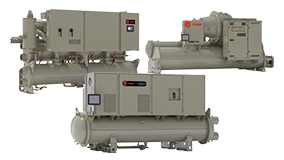Energy Conservation Measures: Making the Business Case Before and After
April 22, 2013
Energy conservation measures (ECMs) in commercial buildings can range from CFL lighting to the installation of a maximum efficiency HVAC system, but they typically fall into the categories of water, electricity or gas. When considering ECM investments, building managers must weigh the upfront costs of the investment with the energy and financial savings, and make the argument to leadership as to why the investment is worth precious capital dollars in the journey to becoming a high performance building.
In this first post of a two-part series, we’ll take a look at how to prepare for ECM skepticism, as well as how to manage the implementation process and to ensure that support for your project does not waver.
When considering an ECM, keep in mind that some younger ECMs like cutting-edge renewables or certain high efficiency products may raise red flags with leadership because they don’t have a long track record of success. In other cases, an ECM may not fit the investment criteria of your organization or the risk to implement the technology is too high. Make sure that your project fits any enterprise-wide criteria.
Next, be sure to have a solid understanding of the process of getting an ECM approved, and bring in any key stakeholders to help you make your case:
- Understand your company’s financial criteria for capital expenditures
- Identify the process for expenditure approval
- Determine who will need to approve the expenditure and think ahead about the key arguments that will help that person understand the benefits of the investment.
- Bring in finance partners to ensure there is a solid business case and reasonable ROI.
If your ECM is approved, give yourself a quick pat on the back, and then prepare for something to go wrong during implementation.
To prepare for the inevitable delay or problem, have a process in place that will provide relevant and timely feedback on a routine basis. Open and honest communication about issues followed by crisp action plans to mitigate the problems is project management 101, but sometimes that can be forgotten in a crisis. By planning ahead and being engaged with your project, you can minimize surprises and take a proactive approach to addressing any issues.
In Part 2, we will look at justifying the investment by using a holistic approach that considers tangible and intangible benefits to an enterprise.
Click here to learn about how Carilion Roanoke Memorial Hospital in Virginia saves more than $250,000 annually thanks to a series of ECM investments.

































































































